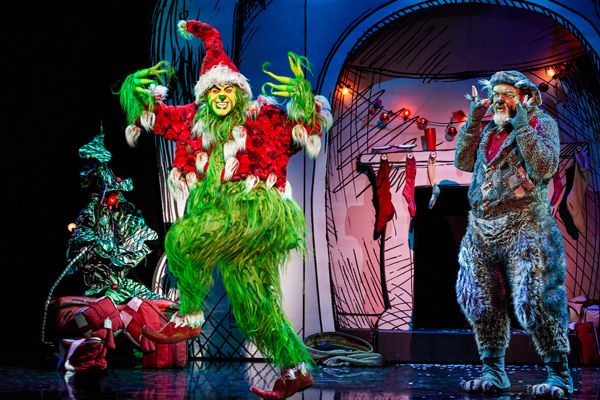Zimmerli Art Museum Celebrates a Vanguard Art Center
By Ilene Dube, JerseyArts.com
originally published: 09/21/2023
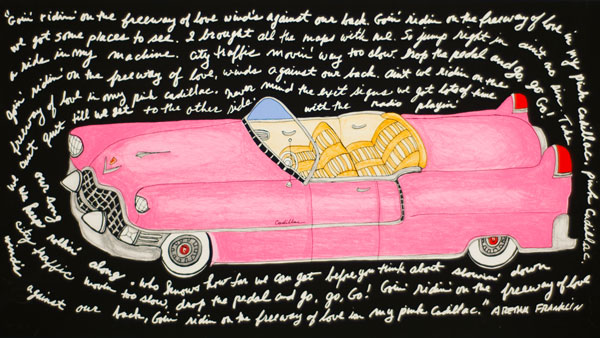
An enormous banner heralding the exhibition The Brodsky Center at Rutgers University: Three Decades 1986-2017 hangs from the façade of the Zimmerli Art Museum on the Rutgers campus in New Brunswick, as if announcing a major homecoming. The gang’s all here: Faith Ringgold, Miriam Schapiro, Carolee Schneemann, Joan Semmel, Joan Snyder, Willie Cole, Emma Amos, and so many other major artists who spent time at the renowned print and papermaking center.
The Brodsky Center garnered a stellar reputation as the place to be in residence to experiment and create new works on paper and in print. Kiki Smith, Trenton Doyle Hancock, Melvin Edwards, Leon Golub, Frank Bowling, Will Barnet, Richard Tuttle, Ela Shah, Dahlia Elsayed – all were drawn to the Brodsky Center.
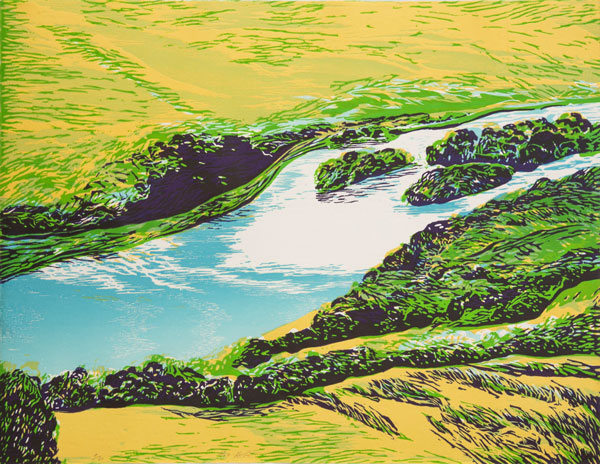
Diane Burko, Delaware River, 1987, 1987. Courtesy of the artist. © Diane Burko.
For those not familiar with The Brodsky Center, the exhibition panel describes it well: “Rutgers Distinguished Professor Emerita Judith K. Brodsky, a visionary artist and advocate, arts administrator and entrepreneur, printmaker, and scholar, recognized that women and gender non-conforming artists, as well as artists of color, were excluded from the art world in the 1980s. Brodsky’s pioneering vision set out in 1986 to rectify the situation by establishing a print- and papermaking residency center for these artists, now known as the Brodsky Center.”
“From its inception,” continues the panel, “the Center strategically placed itself at the vanguard of art making [...] The Brodsky Center, with state-of-the-art facilities, was the site of experiments with concepts that emerged in the 21st century as dominant concerns of artists in the contemporary art world: race and ethnic identity, non-conforming gender issues, climate and the environment, social justice, the politics of language, feminism, and immigration.”
“More than 400 artists were in residence during the 30+ years the Brodsky Center was at Rutgers,” Brodsky recounted at the exhibition reception. (The Center moved to the Pennsylvania Academy of Fine Arts in 2018.) Those artists went on to make work that has become part of the permanent collections of museums including the Victoria & Albert in London, the Stadtmuseum in Berlin, the National Gallery in Canberra, Australia, and in exhibitions in South Africa, Ecuador, Mozambique, Jordan, and throughout the United States.
Beyond all this, or perhaps reflective of it, the exhibition delights the senses with a collection of extraordinary art by many of the leading artists of our era, from El Anatsui and William Kentridge to Elizabeth Catlett and Jaune Quick-to-See Smith.
Each and every work encourages a visitor to want to spend time with it, to absorb its stories. Some of these narratives are visual but many include text, such as Margo Humphrey’s “The History of Her Life Written Across Her Face.” Indeed, this is literally the case.

Bette Blank, Pink Cadillac, 2010. Collaborating printer: Randy Hemminghaus. Edition printers: Randy Hemminghaus, Kristyna Comer, and Kristen Cavagnet. Three-color lithograph and five-color silk screen on Somerset white paper. Edition: 20. Private collection. © Bette Blank. Courtesy Brodsky Center at PAFA.
It’s as if the artists at the Brodsky Center were inhaling color – the selection of artwork by curator and longtime Brodsky collaborator, Ferris Olin, reflects an ecstatic infusion of Cadillac pinks and turquoise, lipstick red and goldenrod yellow.
“From the beginning, Judy often consulted with the staff and students as well as outside curators and artists to identify potential artists who did not have access to state-of the-arts facilities and were contributing innovative new ideas and narratives to the art world,” says Olin. “Many of these artists had not necessarily ever worked in paper or print media.”
So much experimentation went on at the Brodsky Center, such as including fabric in papermaking in Joan Snyder’s “white field/ pink & orange” (2010). In an accompanying video, collaborative printmaker Anne McKeown talks about learning in her mother’s kitchen that kitchens aren’t just for food. “Papermaking feels very much like cooking,” McKeown says. “It’s like working with phyllo dough,” both requiring fine motor coordination.
McKeown also collaborated with artist El Anatsui, famed worldwide for his undulating tapestries made from bottlecaps and other metallic detritus. At the Brodsky Center he produced “Learned Paper Series” in 2012 – it was the Nigerian artist’s first experience working in paper, “and he fell in love with the process,” says Brodsky. Subsequently El Anatsui and McKeown become good friends. McKeown also befriended Elizabeth Catlett, visiting her San Miguel de Allende studio to deliver a set of plates, and collaborated with Chakaia Booker on “Impending Encounter” in 2008. Booker’s sculptures are usually made from black rubber tires, and this delicate work in paper is suggestive of those shapes.
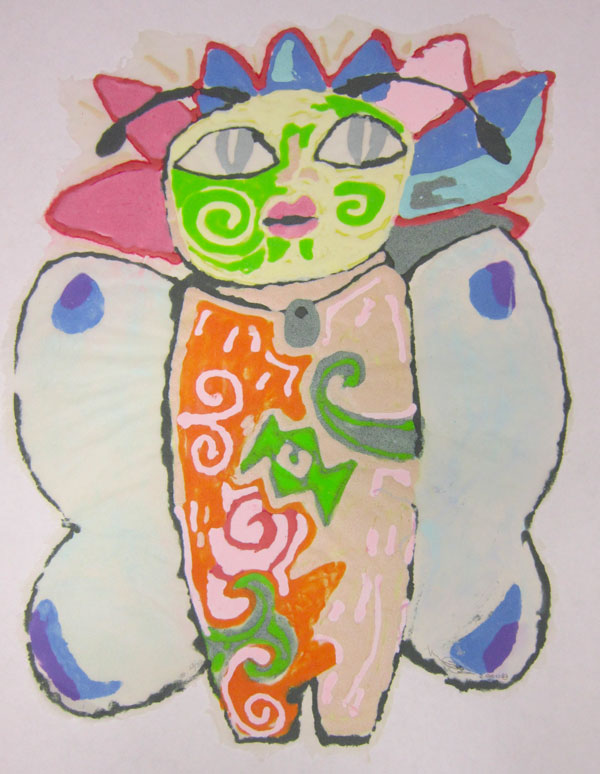
Melanie Yazzie, Metamorphosis, 2000. Collaborating printer and papermaker: Gail Deery. Lithograph on pulp painting in overbeaten abaca fiber and linen paper. Edition: variants of 37. Collection Zimmerli Art Museum at Rutgers, gift of the Brodsky Center, and Private Collection. Photo Dorothy Paolo.
“Because print and papermaking are collaborative media, I was insistent that on all labels the collaborating master print and papermakers were identified with the visiting artist-in-residence as the creators of each work,” says Olin. “In most exhibitions of works on paper, only the artist is mentioned. To exclude the partnership that produced the work of art is to deny the way works on paper are created.”
“It is also the reason that I wanted to include a work made by each of the master print- and papermakers in the show,” she continues, honoring them as artists in their own right.
In a video that plays in the gallery, Brodsky talks about how she started the center: June Wayne’s Tamarind Lithography Workshop in Albuquerque, New Mexico, was a model, and Wayne was a friend. Brodsky knew she had the administrative and fundraising skills to create a printmaking center where master printmakers would work alongside students who didn’t have access to a press. Brodsky wanted her center to focus on women-identifying artists and artists of color. “Indeed, we were sixty percent women and forty percent artists of color during a period of white male domination in the art world,” she says.
Not only is there an extensive catalog published in conjunction with the exhibition, but just about every object label has a QR code linking to a video about the artist. In many cases the artists are interviewed.
If it seems a lifetime of work went into this exhibition, it did. Not only was there the establishment and the running of the Center – Olin shared much of that experience with Brodsky -- but to showcase it in the form of an exhibition there were, beginning in 2005, National Endowment for the Arts planning grants and talks with the Museum of Modern Art, the Victoria & Albert Museum, and the New Jersey State Museum; and projects with various prongs such as a video archive and a catalog raisonné.
“The NJSM had a full set of the Brodsky Center prints [that had been] the subject of an exhibition I organized that traveled the United States, Europe, Africa, and the Middle East,” notes Brodsky. She had established the New Jersey Print and Papermaking Fellowship Program to give impressions from each of their editions to New Jersey museums including the Montclair Museum, the Newark Public Library, the Hunterdon Art Museum, the Noyes Museum, and the Zimmerli. “The gifts to museums were based on my understanding that to enter the art historical record, artists needed to have their work in permanent collections.”
“At the beginning of 2023, Maura Reilly, the Zimmerli Art Museum’s director, contacted me about guest curating this show for fall season,” says Olin. “Even though I had already done much research on the Center and made two proposals for a Brodsky Center show, I had to reinvent an exhibition customized for Rutgers, based on the museum’s own holdings. I was fortunate that the Zimmerli already had an outstanding collection of work produced at the Brodsky Center.”
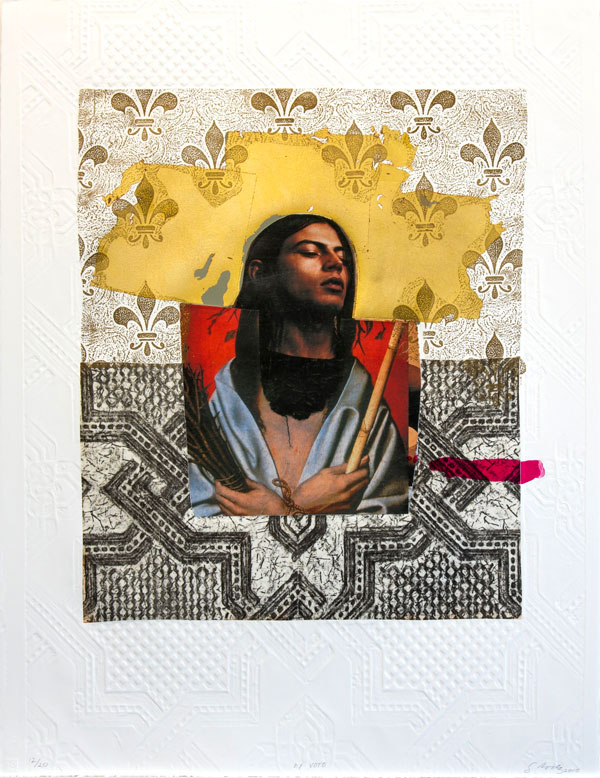
Gloria Rodríguez Calero (RoCa), Ex-Voto, 2000. Collaborating printer: Eileen M. Foti. Lithograph with chine collé, gold leaf, Iris print, and embossing on Rives BFK white and Kinwashi papers. Edition: 20. Courtesy of Dorothy Paolo. © Rodriguez Calero.
In the gallery video, Brodsky discusses the challenges in getting funds and recognition for an institution devoted to the arts. In a separate interview she says “The Center’s operations were self-supporting and except for half a university line for a technician which was used to supply part of the salary for a master printer, the majority of the funds raised went to support the professional print and paper staff and the residencies of the artists.”
In the video, Brodsky confides that she carved her own office out of a supply closet, and forewent a salary so that the others on staff could be paid.
Many of the artists who were on the forefront of the Feminist Art Movement are now 70 and older, and Olin acknowledges them as the sages, devoting a special section to them.
“Despite their advanced ages, these artists, ranging in age from the late 60s to over 100, have continued to think, create, and actively engage with the world, when many people consider themselves retired or beyond their more youthful capabilities,” says the exhibition text. “As they aged, these artists continued to think, create, and actively engage with the world.”
The title of Nell Painter’s “Wise Woman Disappears” in this section says it all.
Brodsky and Olin have been collaborating for nearly five decades. They founded and co-directed several initiatives and institutions, including the Institute for Women and Art, the Women Artists Archive National Directory, the Miriam Schapiro Archives on Women Artists, and the Feminist Art Project, and curated and organized many exhibitions together, such as How American Women Artists Invented Postmodernism, 1970-1975 and The Fertile Crescent: Gender, Art, and Society. They are also good friends, recently traveling together to Uzbekistan, and they even experienced Covid at the same time.
Upon meeting in 1976, “we connected immediately,” recounts Brodsky. “Both of us were energetic and found satisfaction in creating projects that would develop social justice and advance the inclusion of diversity of people and ideas in the art world. It has been a wonderful partnership.”
When Brodsky, who celebrated her 90th birthday this year, was asked how it felt to have this exhibition, a sort of culmination of all that she’s done – there’s also a sidebar exhibition of her own artwork – she retorted “I don’t see it as culminating my career. I’m still looking toward next projects.” She is indeed working on a major series of exhibitions in Philadelphia, writing a book documenting the continuation of the Feminist Art Movement, and pursuing a series of oversize figurative drawings with a garden theme, mixing real people with statuary and cicadas. “Still relating to the pandemic years of isolation, life and death, mortality and immortality -- my consistent themes.”
The exhibit is on display from September 13 - December 22, 2023. The Zimmerli Art Museum is located at 71 Hamilton Street in New Brunswick, New Jersey.
About the author: Driven by her love of the arts, and how it can make us better human beings, Ilene Dube has written for JerseyArts, Hyperallergic, WHYY Philadelphia, Sculpture Magazine, Princeton Magazine, U.S. 1, Huffington Post, the Princeton Packet, and many others. She has produced short documentaries on the arts of central New Jersey, as well as segments for State of the Arts, and has curated exhibitions at the Trenton City Museum at Ellarslie and Morven Museum in Princeton, among others. Her own artwork has garnered awards in regional exhibitions and her short stories have appeared in dozens of literary journals. A life-long practitioner of plant-based eating, she can be found stocking up on fresh veggies at the West Windsor Farmers Market.
Content provided by
Discover Jersey Arts, a project of the ArtPride New Jersey Foundation and New Jersey State Council on the Arts.
FEATURED EVENTS
Narrow results by date, categories, or region of New Jersey.
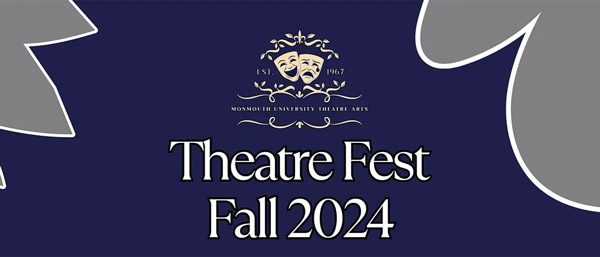
Theatre Fest Fall 2024 – Alpha Psi Omega Presents: To Be or Not to Be: Hamlet, an Abridged Staging
Saturday, November 23, 2024 @ 8:00pm
Monmouth University - Lauren K. Woods Theatre
370 Cedar Avenue, West Long Branch, NJ 07764
category: theatre
View event page for full information

Harry Potter and the Cursed Child (HS Edition)
Saturday, November 23, 2024 @ 7:00pm
Grunin Center
1 College Drive, Toms River, NJ 08754
category: theatre
View event page for full information

Harry Potter and the Cursed Child (HS Edition)
Saturday, November 23, 2024 @ 1:00pm
Grunin Center
1 College Drive, Toms River, NJ 08754
category: theatre
View event page for full information
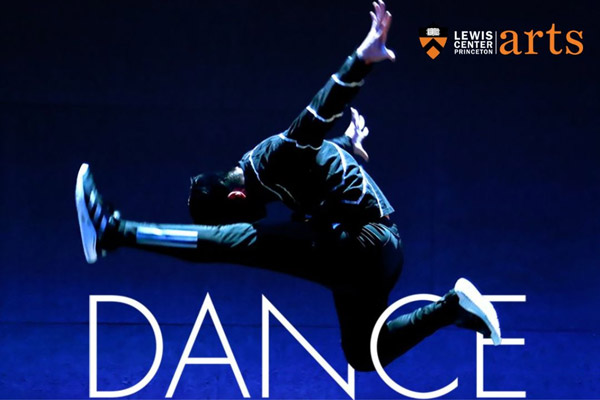
2024 Princeton Dance Festival
Saturday, November 23, 2024 @ 8:00pm
McCarter Theatre Center (Berlind Theatre)
91 University Place, Princeton, NJ 08540
category: dance
View event page for full information

2024 Princeton Dance Festival
Saturday, November 23, 2024 @ 2:00pm
McCarter Theatre Center (Berlind Theatre)
91 University Place, Princeton, NJ 08540
category: dance
View event page for full information
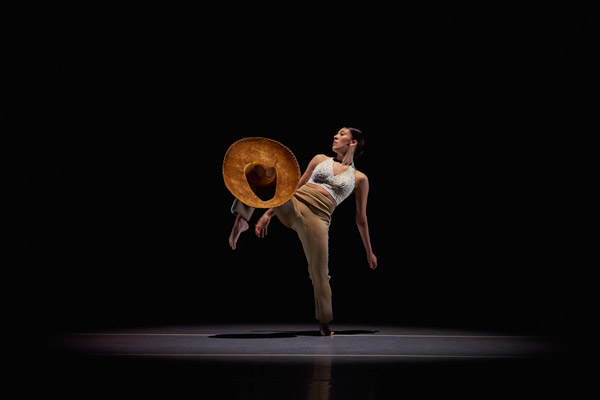
Fall Dance Plus
Saturday, November 23, 2024 @ 7:30pm
New Brunswick Performing Arts Center (NBPAC)
11 Livingston Avenue, New Brunswick, NJ 08901
category: dance
View event page for full information
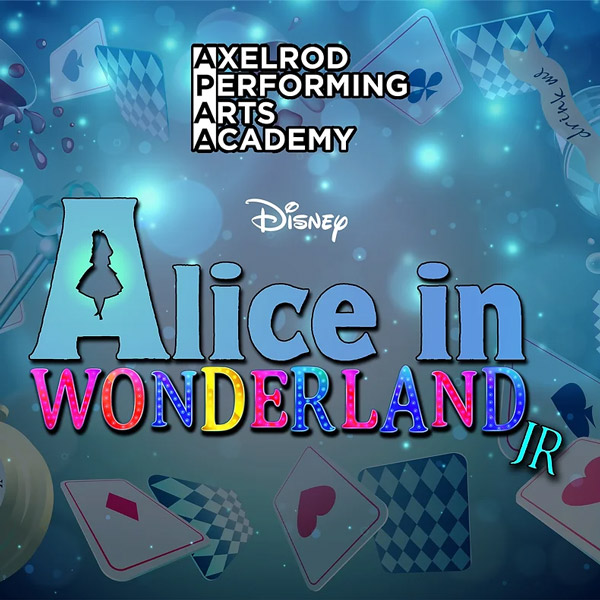
Axelrod Performing Arts Academy presents Disney's "Alice in Wonderland, Jr."
Saturday, November 23, 2024 @ 7:00pm
Bell Theater
101 Crawfords Corner Road, Holmdel, NJ 07733
category: theatre
View event page for full information

Axelrod Performing Arts Academy presents Disney's "Alice in Wonderland, Jr."
Saturday, November 23, 2024 @ 3:00pm
Bell Theater
101 Crawfords Corner Road, Holmdel, NJ 07733
category: theatre
View event page for full information
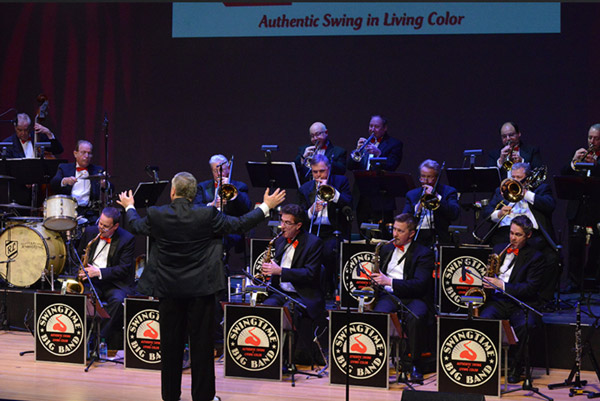
HAPPY FRANKS-GIVING! – Swingtime Big Band Celebrates Sinatra
Saturday, November 23, 2024 @ 8:00pm
Bergen Performing Arts Center (bergenPAC)
30 North Van Brunt Street, Englewood, NJ 07631
category: music
View event page for full information

Elf The Musical
Saturday, November 23, 2024 @ 7:00pm
Count Basie Center for the Arts
99 Monmouth Street, Red Bank, NJ 07701
category: theatre
View event page for full information

Elf The Musical
Saturday, November 23, 2024 @ 1:00pm
Count Basie Center for the Arts
99 Monmouth Street, Red Bank, NJ 07701
category: theatre
View event page for full information
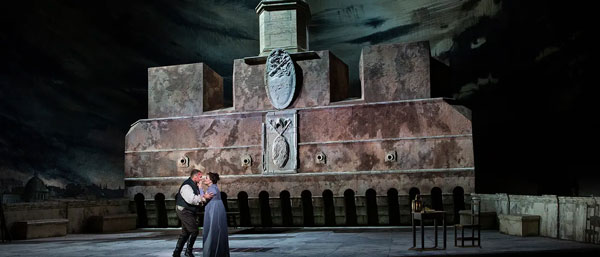
The Metropolitan Opera: Live in HD - Tosca
Saturday, November 23, 2024 @ 1:00pm
Monmouth University - Pollak Theatre
400 Cedar Avenue, West Long Branch, NJ 07764
category: theatre
View event page for full information
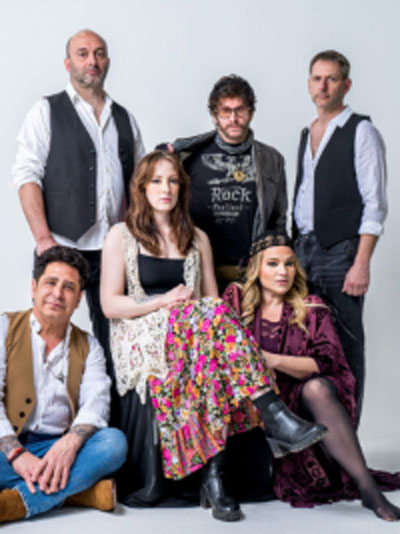
StevieMac: A Fleetwood Mac & Stevie Nicks Experience
Saturday, November 23, 2024 @ 8:00pm
William Paterson University - Shea Center for Performing Arts
300 Pompton Rd, Wayne, NJ 07470
category: music
View event page for full information
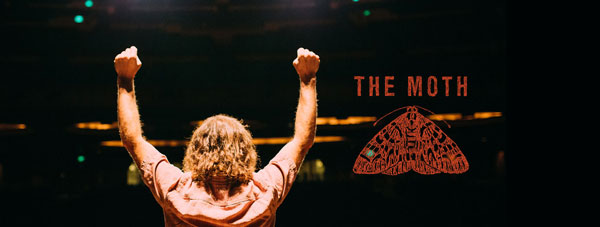
The Moth
Saturday, November 23, 2024 @ 7:30pm
McCarter Theatre Center (Matthews Theater)
91 University Place, Princeton, NJ 08540
category: community
View event page for full information

Dr. Seuss' How The Grinch Stole Christmas! The Musical
Saturday, November 23, 2024 @ 7:30pm
State Theatre New Jersey
15 Livingston Avenue, New Brunswick, NJ 08901
category: theatre
View event page for full information

Dr. Seuss' How The Grinch Stole Christmas! The Musical
Saturday, November 23, 2024 @ 3:00pm
State Theatre New Jersey
15 Livingston Avenue, New Brunswick, NJ 08901
category: theatre
View event page for full information

Dr. Seuss' How The Grinch Stole Christmas! The Musical
Saturday, November 23, 2024 @ 10:30am
State Theatre New Jersey
15 Livingston Avenue, New Brunswick, NJ 08901
category: theatre
View event page for full information
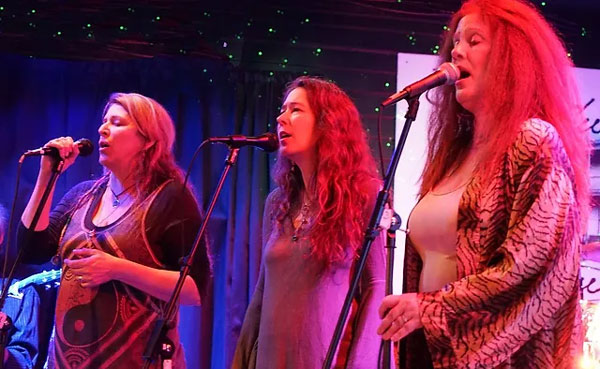
Wooden Ships Band
Saturday, November 23, 2024 @ 7:30pm
Lizzie Rose Music Room
217 E. Main Street, Tuckerton, NJ 08087
category: music
View event page for full information
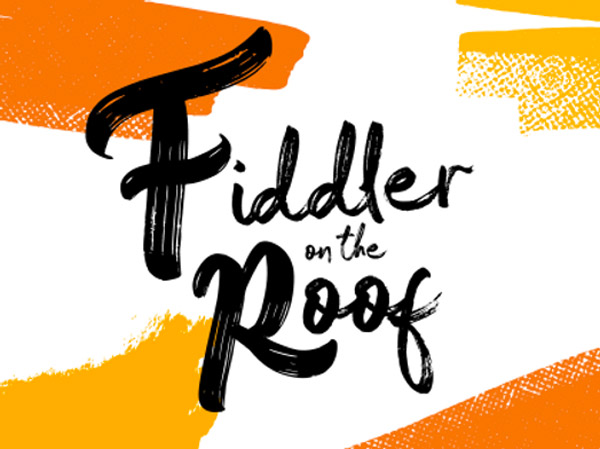
Fiddler On The Roof
Saturday, November 23, 2024 @ 7:30pm
Axelrod Performing Arts Center
100 Grant Avenue, Deal Park, NJ 07723
category: theatre
View event page for full information

Fiddler On The Roof
Saturday, November 23, 2024 @ 1:30pm
Axelrod Performing Arts Center
100 Grant Avenue, Deal Park, NJ 07723
category: theatre
View event page for full information
More events
Event Listings are available for $10 and included with our banner ad packages
EVENT PREVIEWS
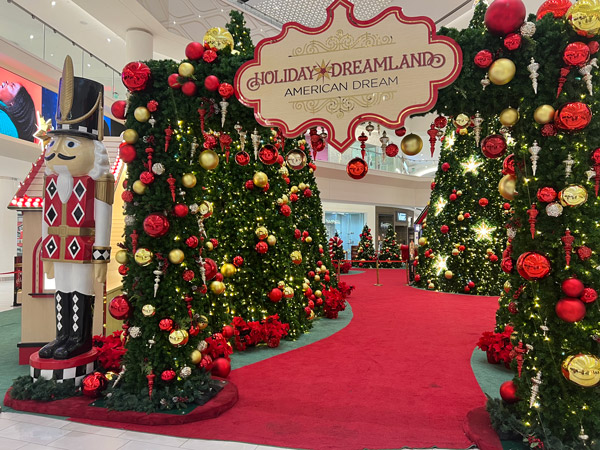
American Dream Announces Holiday Plans
(EAST RUTHERFORD, NJ) -- American Dream invites guests to spend the holidays at the one-of-a-kind center, as it transforms into a winter wonderland showcasing the very best in retail, dining and entertainment. Throughout the season, American Dream will be giving away incredible prizes, creating lasting memories and spreading joy throughout the community.
UPCOMING EVENTS
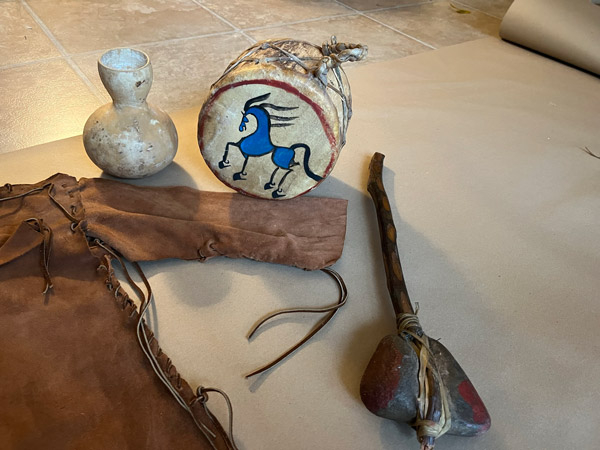
South Jersey's Indigenous Communities Celebrated in New A.C. Arts Garage Exhibit
(ATLANTIC CITY, NJ) -- A new exhibit at the Noyes Arts Garage of Stockton University will celebrate two southern New Jersey tribal communities through the display of historical documents, traditional artifacts and contemporary art. "Still Here: The Nanticoke Lenni-Lenape and Powhatan-Renape Nations of Southern New Jersey" opens October 9 and runs until January 5, 2025.






















